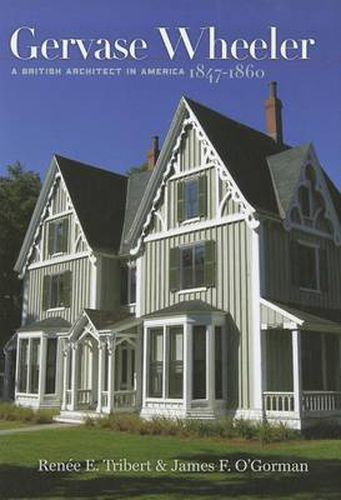Readings Newsletter
Become a Readings Member to make your shopping experience even easier.
Sign in or sign up for free!
You’re not far away from qualifying for FREE standard shipping within Australia
You’ve qualified for FREE standard shipping within Australia
The cart is loading…






Gervase Wheeler was an English-born architect who designed such important American works as the Henry Boody House in Brunswick, Maine; the Patrick Barry House in Rochester, New York; and the chapels at Bowdoin and Williams colleges. But he was perhaps best known as the author of two influential architecture books, Rural Homes (1851) and Homes for the People (1855). Yet Wheeler has remained a little known, enigmatic figure. Renee Tribert and James F. O'Gorman’s study sheds new light on the course of Wheeler’s career in the states, and brings crucial issues to the fore-the international movement of ideas, the development of the American architectural profession, the influence of architectural publications on popular taste, and social history as expressed in the changing nature of the American house. Wheeler’s career is traced chronologically and geographically and the book is lavishly illustrated with over fifty images, including building plans and historical photographs.
$9.00 standard shipping within Australia
FREE standard shipping within Australia for orders over $100.00
Express & International shipping calculated at checkout
Gervase Wheeler was an English-born architect who designed such important American works as the Henry Boody House in Brunswick, Maine; the Patrick Barry House in Rochester, New York; and the chapels at Bowdoin and Williams colleges. But he was perhaps best known as the author of two influential architecture books, Rural Homes (1851) and Homes for the People (1855). Yet Wheeler has remained a little known, enigmatic figure. Renee Tribert and James F. O'Gorman’s study sheds new light on the course of Wheeler’s career in the states, and brings crucial issues to the fore-the international movement of ideas, the development of the American architectural profession, the influence of architectural publications on popular taste, and social history as expressed in the changing nature of the American house. Wheeler’s career is traced chronologically and geographically and the book is lavishly illustrated with over fifty images, including building plans and historical photographs.